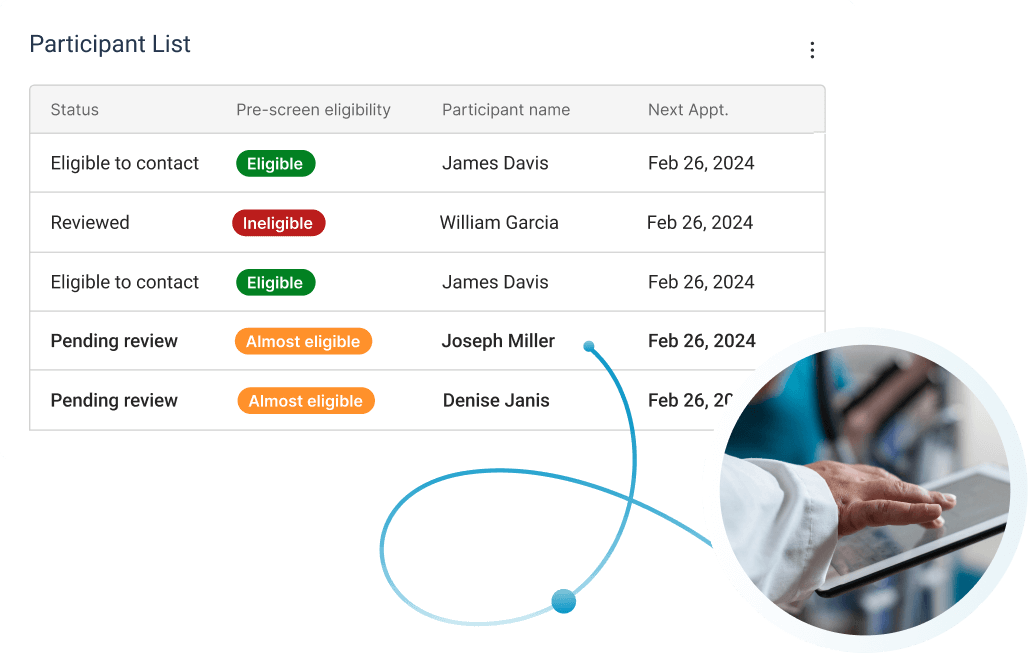CLINT FOR LIFE SCIENCES
A unique point of care lever for evidence-based patient management
Clint allows life sciences companies to increase guideline adherence, drive more focused commercialization programs, increase brand revenue, and speed research and clinical trials.


Clint Care for Life Sciences
Clint Care delivers a unique lever to enable precise and evidence-based patient management by analyzing the full EHR at healthcare systems, identifying care gaps, and delivering recommendations to healthcare providers at the point of care.
Clint Care for Commercial Teams
Drive Rx lift with direct influence at the point of care
Increase Reach and Focus
Identify care gaps at a population and health system level in near real time
Improve Guideline Adherence
Raise awareness of available therapies in the context of care guidelines based on each patient’s true clinical state
Influence Rx Lift
Inform treatment decisions and prescription switching, supported by medical evidence, in every clinical encounter
Refine Program Effectiveness
Capture metrics on HCP engagement, click-through rates to Clint dashboards, time spent reviewing guidelines, and other behaviors at the point of care
Commercial teams use Clint Care to identify care gaps across specific locations, healthcare providers, and patients.
Clint Care is uniquely able to provide this guidance because it analyzes the full EHR at healthcare systems.
Commercial teams use the analysis to refine programs to target selected healthcare systems, clinicians and patients with evidence-based therapies to address care gaps.

Care gap hot spots identified by Clint
At the point of care, healthcare professionals use Clint to review recommendations and determine the best course of action, such as ordering a prescription or evaluating a patient for a clinical trial.

Clint applies the most recent medical guidelines to automatically identify care gaps and recommend therapies or tests based on the health status of each patient.
Clint Care helps commercial teams to refine program effectiveness by collecting information from healthcare providers when they choose not to accept a recommendation.
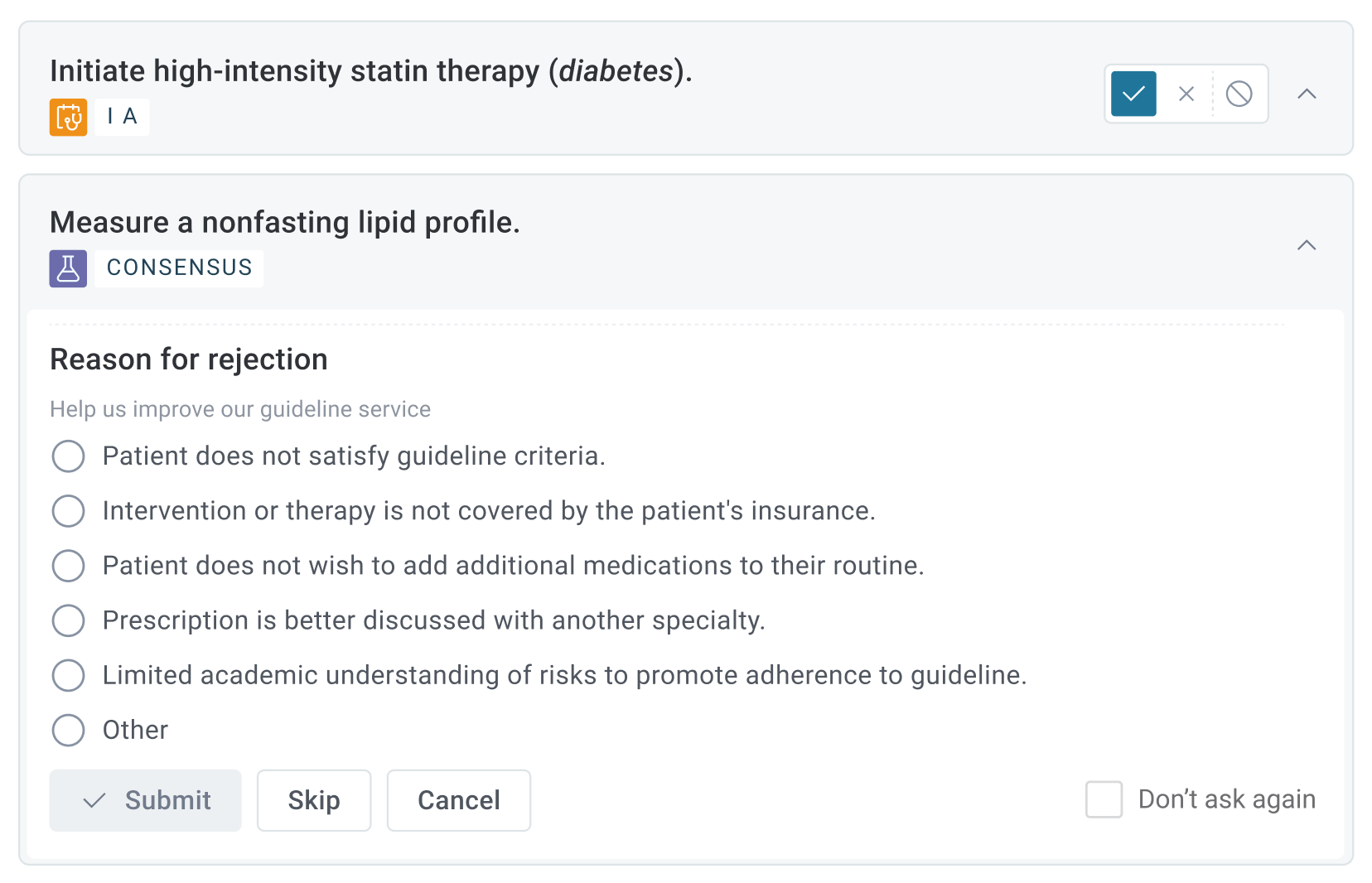
Commercial teams can monitor adoption opportunities using Clint dashboards to pinpoint issues with outreach.
Dashboards analyze prescribing behavior, adoption patterns, and guideline adherence.

Clint captures metrics on healthcare provider engagement, such as click-through rates to Clint dashboards, time spent reviewing guidelines, and other behaviors at the point of care

Case study
Illumina used Clint to reveal $320M of additional opportunity for genetic testing
Download
Clint Care for Medical Affairs
Identify and quantify care gaps and model strategies
Identify and Quantify Care Gaps
Pinpoint gaps in care for specific patients and healthcare providers, or across an entire patient population in a health system using EHR data, not just ICD codes
Assess Guideline Adherence
Determine how well clinical practice guidelines are being followed and capture rejection reasons for better education campaigns
Expand Reach and Impact
Influence care guidelines to include evidence-based therapies and ensure healthcare providers as a valuable and recommended option for patients who meet specific criteria
Simulate Medical Strategy with Real-World Data
Model medical strategy using real-world datasets and identify the most effective approach
By analyzing the full EHR at healthcare systems, Clint Care pinpoints care gaps across patient populations, healthcare systems, and healthcare providers.
Medical affairs teams use Clint analysis to guide outreach and education strategies for evidence-based therapies to treat specific diseases or indications.
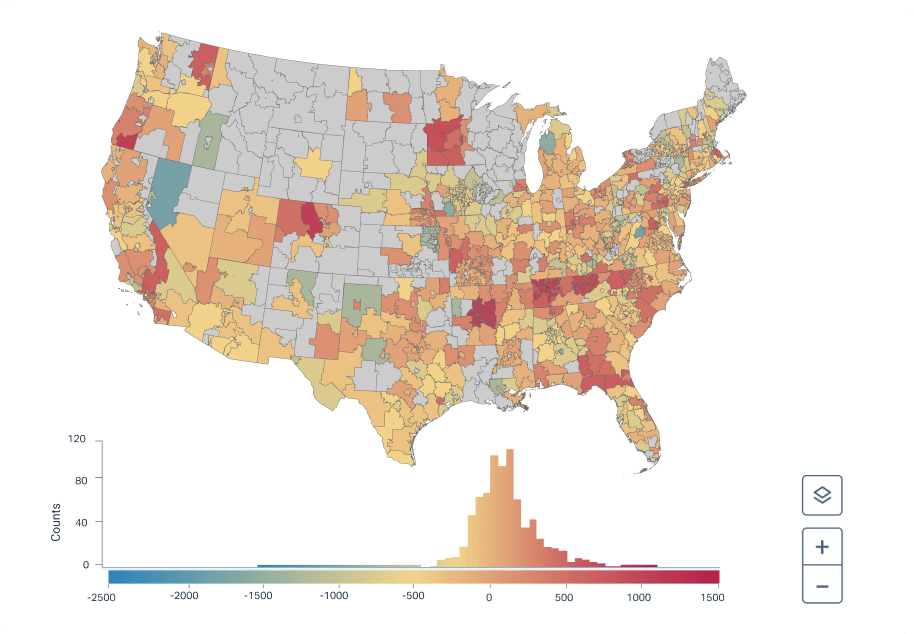
Care gaps identified by Clint
Medical affairs teams use Clint Care to model intervention strategies using real-world, real-time data before implementation.
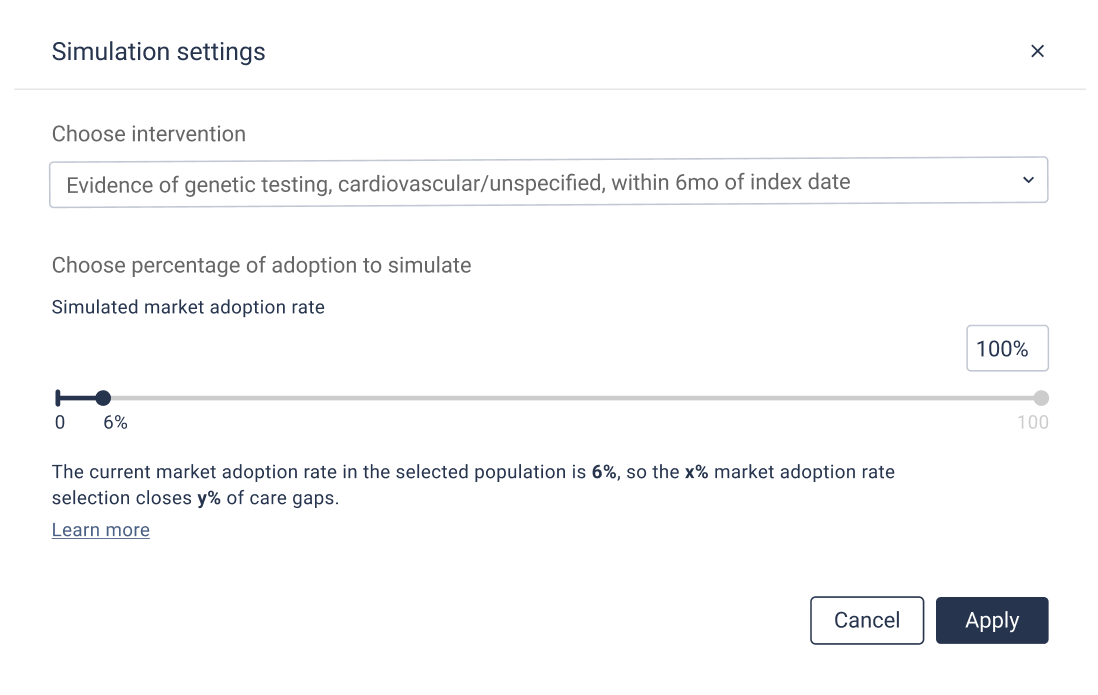
Simulate various adoption rates to find the care gap closure rates
By continuously monitoring real-world data, medical affairs teams can modify medical strategies in response to market changes and point-of-care behaviors.
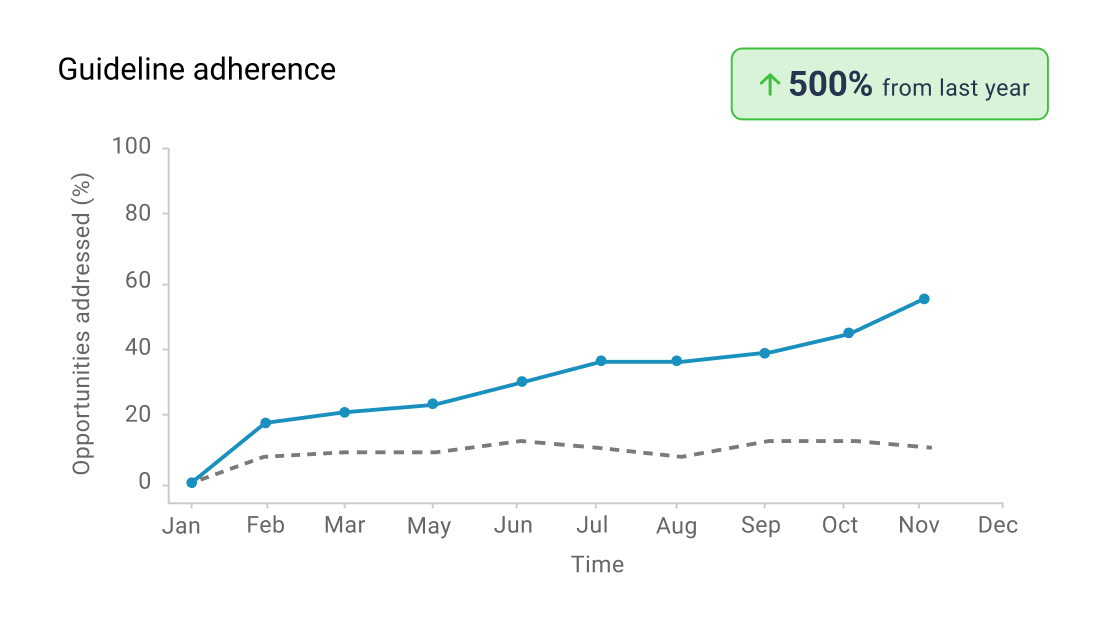
Clint Care also captures information from healthcare providers when they choose not to accept a recommendation.
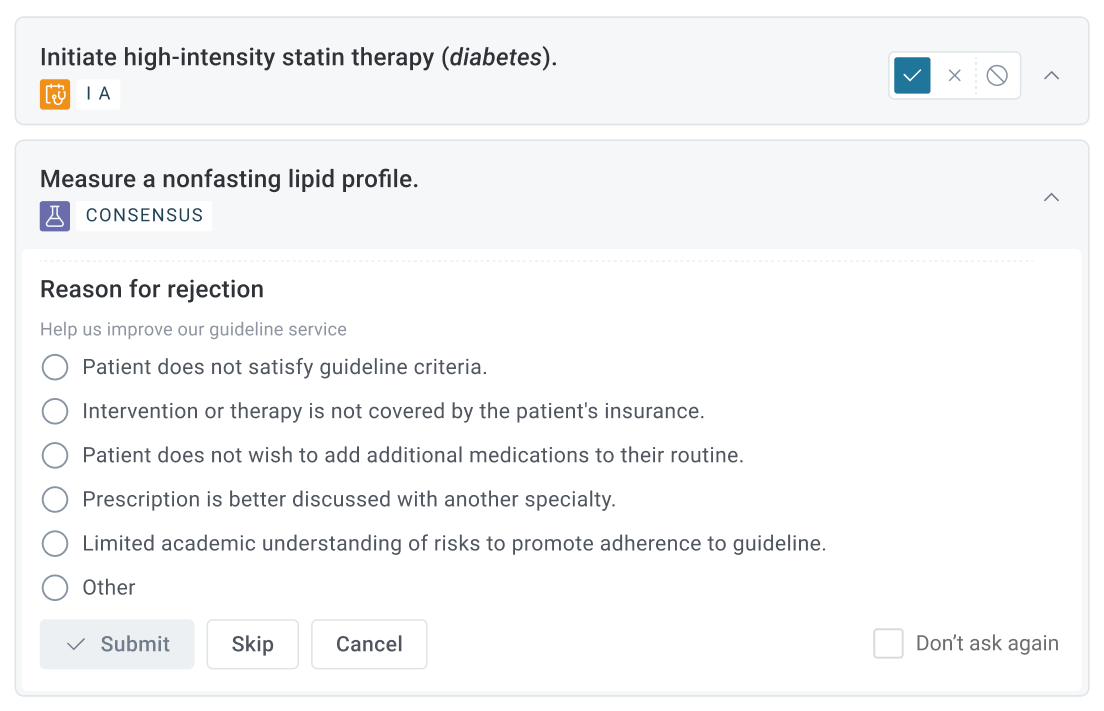
Clint Attract for Clinical Operations
Reduce protocol amendments, optimize patient safety, and ensure data integrity
Optimize Trial Design
More time to determine relevant endpoints and select the best patient populations to yield statistically meaningful results
Automate Site Feasibility
Use EHR records to quickly identify qualified sites with proven ability to conduct effective clinical trials
Identify Patients Faster
Automatically identify eligible patients for each site based on their EHR records
Balance Demographics in Real-Time
Automatically drives a mix of eligible patients to achieve diversity, equity, and inclusion goals
Clint Attract analyzes the EHR across healthcare systems so that researchers design trials based on the most comprehensive set of HIPAA-compliant patient characteristics.
Researchers use advanced inclusion/exclusion capabilities to specify priority characteristics and simulate effects on population counts, event rates, and comorbidities.

Researchers also may model risk and event rates, to enrich the cohorts with highly-eligible populations that are likely to have events in a certain timeframe
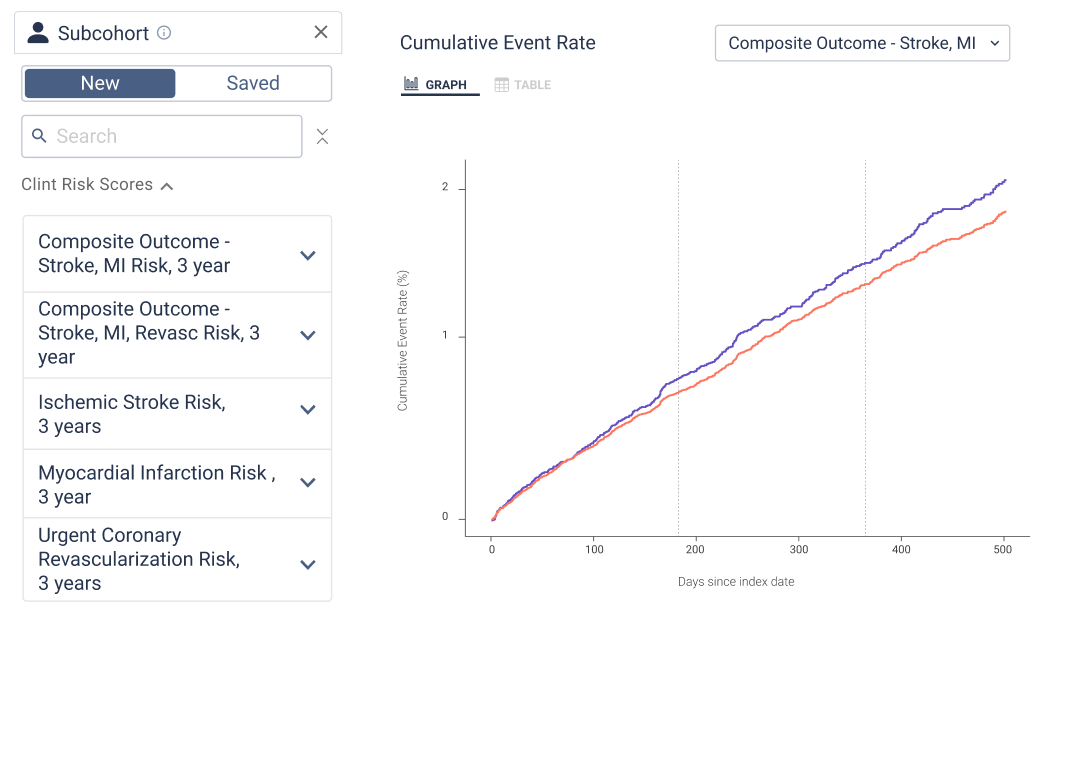
Clint Attract instantly maps patient populations based on ZIP3, allowing researchers to choose the sites with the most potential.
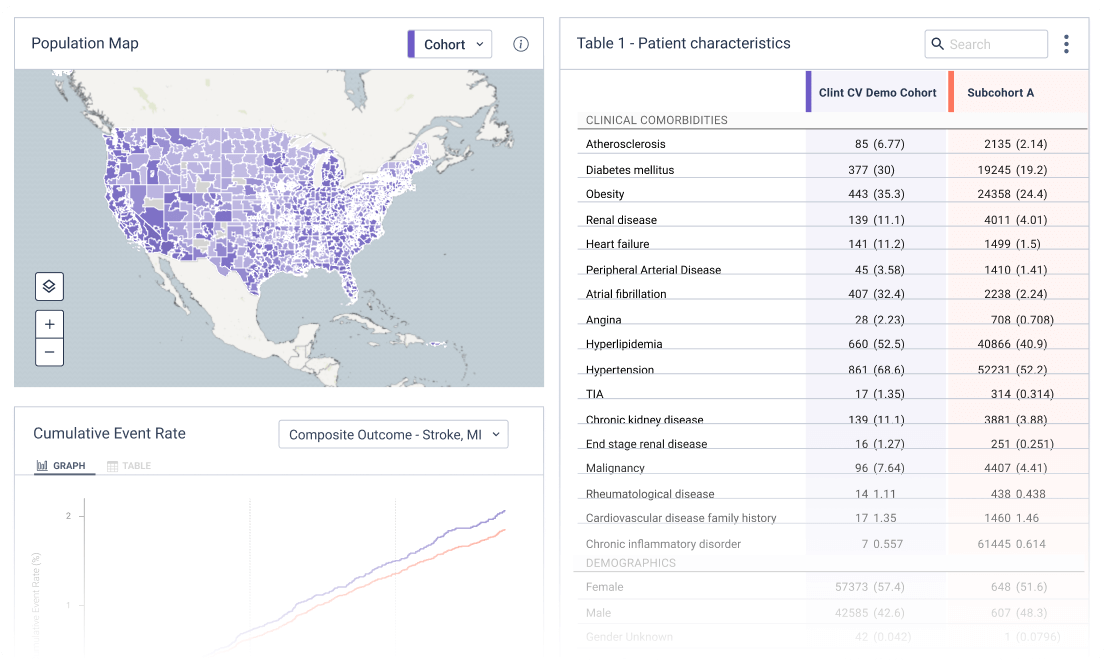
Clint Attract automates data-driven feasibilities of sites based on previous performance across the healthcare network.
The solution also estimates enrollment and start-up time for each site.
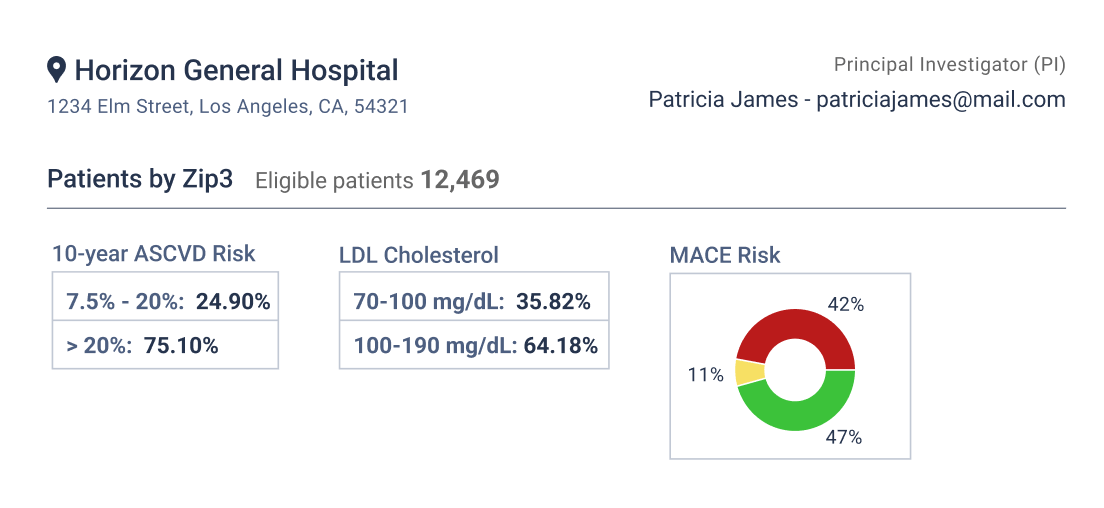
Researchers can filter site views by characteristics such as site size or historical start-up time
Sites receive clinically accurate, pre-screened lists of patients that meet the eligibility criteria of the protocols.
- Automatically identifies patients that satisfy complex inclusion/exclusion criteria
- Proven to deliver a low screen failure rate (<10%)
- Integrates into the clinical operation team’s workflows to speed enrollment and increase the likelihood of meeting clinical trial timelines
